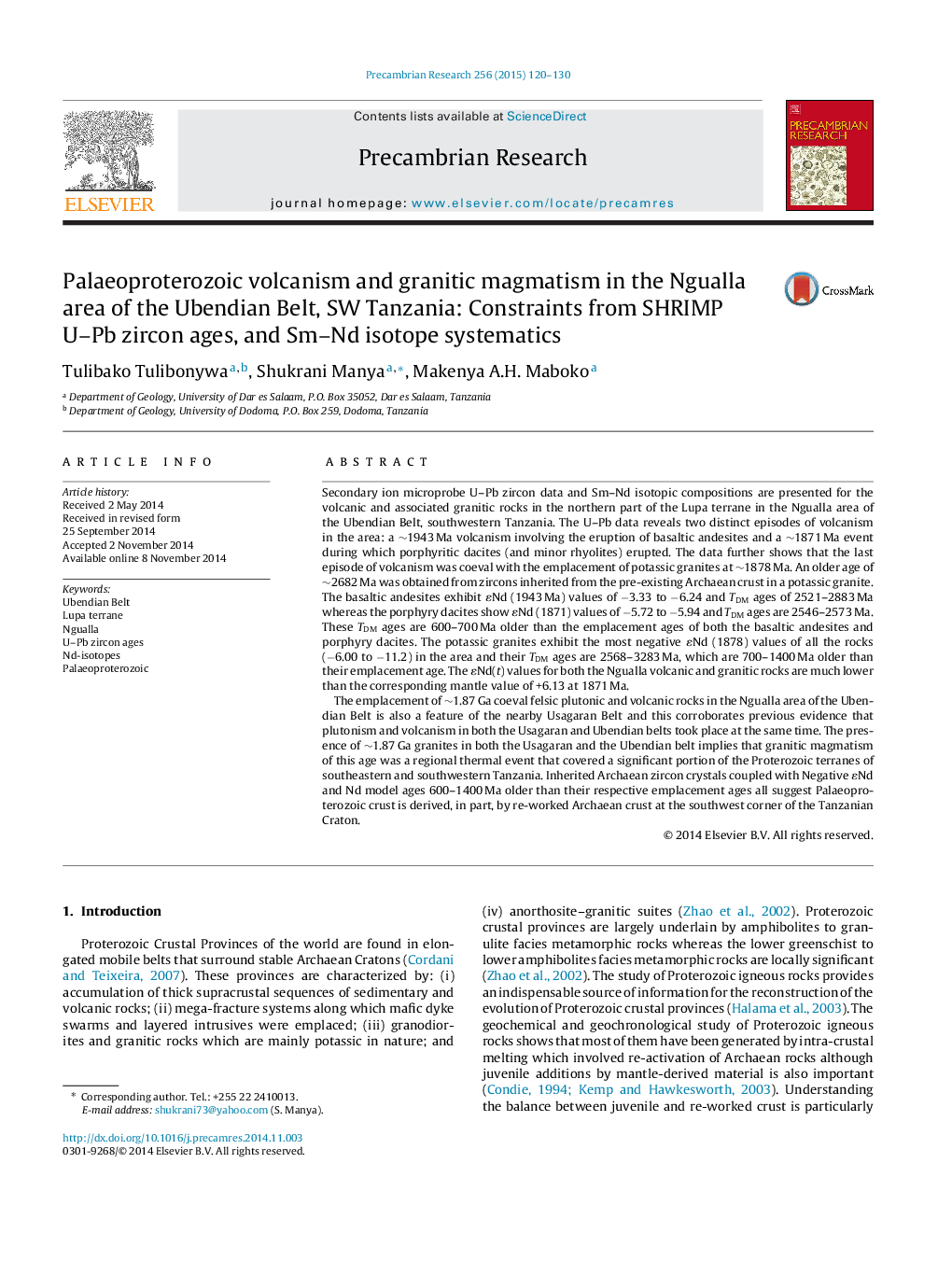| کد مقاله | کد نشریه | سال انتشار | مقاله انگلیسی | نسخه تمام متن |
|---|---|---|---|---|
| 4722908 | 1639619 | 2015 | 11 صفحه PDF | دانلود رایگان |

• Two distinct episodes of volcanism (1943 Ma and 1875 Ma) are dated in the Ngualla area.
• The younger volcanism was coeval with granitic intrusion at 1878 Ma.
• The ∼1.87 Ga granitic intrusion is a thermal Ubendian–Usagaran regional event.
• The Ngualla rocks in the Ubendian were generated by reworking of Archaean crust.
Secondary ion microprobe U–Pb zircon data and Sm–Nd isotopic compositions are presented for the volcanic and associated granitic rocks in the northern part of the Lupa terrane in the Ngualla area of the Ubendian Belt, southwestern Tanzania. The U–Pb data reveals two distinct episodes of volcanism in the area: a ∼1943 Ma volcanism involving the eruption of basaltic andesites and a ∼1871 Ma event during which porphyritic dacites (and minor rhyolites) erupted. The data further shows that the last episode of volcanism was coeval with the emplacement of potassic granites at ∼1878 Ma. An older age of ∼2682 Ma was obtained from zircons inherited from the pre-existing Archaean crust in a potassic granite. The basaltic andesites exhibit ɛNd (1943 Ma) values of −3.33 to −6.24 and TDM ages of 2521–2883 Ma whereas the porphyry dacites show ɛNd (1871) values of −5.72 to −5.94 and TDM ages are 2546–2573 Ma. These TDM ages are 600–700 Ma older than the emplacement ages of both the basaltic andesites and porphyry dacites. The potassic granites exhibit the most negative ɛNd (1878) values of all the rocks (−6.00 to −11.2) in the area and their TDM ages are 2568–3283 Ma, which are 700–1400 Ma older than their emplacement age. The ɛNd(t) values for both the Ngualla volcanic and granitic rocks are much lower than the corresponding mantle value of +6.13 at 1871 Ma.The emplacement of ∼1.87 Ga coeval felsic plutonic and volcanic rocks in the Ngualla area of the Ubendian Belt is also a feature of the nearby Usagaran Belt and this corroborates previous evidence that plutonism and volcanism in both the Usagaran and Ubendian belts took place at the same time. The presence of ∼1.87 Ga granites in both the Usagaran and the Ubendian belt implies that granitic magmatism of this age was a regional thermal event that covered a significant portion of the Proterozoic terranes of southeastern and southwestern Tanzania. Inherited Archaean zircon crystals coupled with Negative ɛNd and Nd model ages 600–1400 Ma older than their respective emplacement ages all suggest Palaeoproterozoic crust is derived, in part, by re-worked Archaean crust at the southwest corner of the Tanzanian Craton.
Figure optionsDownload as PowerPoint slide
Journal: Precambrian Research - Volume 256, January 2015, Pages 120–130